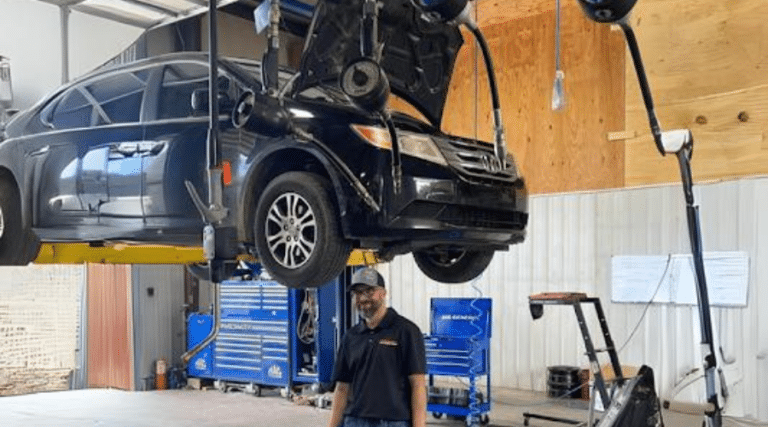Featured

[/image]
2 of the most crucial tire solutions are tire rotation and placement. If you're unknown with what tire turning and positioning entail, here's a comprehensive look at why they matter and how they profit your vehicle.
What Is Tire Turning? Tire rotation refers to moving your tires from one position to another to ensure they wear equally. The factor tire rotation is required is since not all tires use the exact same way. In front-wheel-drive automobiles, as an example, the front tires manage both guiding and power, which makes them break faster than the back tires. Likewise, the rear tires wear differently in rear-wheel-drive and all-wheel-drive vehicles.
By revolving your tires on a regular basis, you can stabilize out the wear throughout all 4 tires. This helps them last longer and enables even more also grip, enhancing handling and security. The majority of makers advise revolving your tires every 6,000 to 8,000 miles or according to the vehicle's manual.
What Is Tire Placement? Tire positioning, likewise called wheel placement, describes the process of changing the angles of your car's wheels to fulfill the producer's requirements. The goal of placement is to guarantee that all 4 tires are pointing in the right direction and at the proper angles, which enables for optimal handling, safety and security, and tire life.
There are 3 primary placement angles that are adjusted throughout a positioning check:

Camber: The tilt of the wheels when watched from the front. If the camber is off, it can bring about unequal tire wear, as the tire will certainly not make full contact with the roadway surface. Caster: The angle of the steering axis when seen from the side. Appropriate caster placement guarantees that your automobile is secure when driving straight which your wheel returns to its typical setting after a turn. Toe: The angle at which the tires point inward or external when checked out from above. Inaccurate toe placement can create the tires to drag, causing irregular wear and minimized fuel efficiency. Imbalance can take place gradually because of typical driving or from hitting challenges like curbs or pits. If your alignment is off, it is very important to obtain it examined and fixed to prevent problems later on.
Why Tire Rotation and Positioning Matter. Enhanced Tire Life:. Regular tire turning makes certain also tire wear, aiding you obtain the most mileage out of your tires. Unequal wear can create you to change tires prematurely, which can be costly. When your tires put on uniformly, they last longer, conserving you cash in the long-term.
Improved Vehicle Handling:. Proper alignment keeps your vehicle driving straight and stable, particularly at greater speeds. Misalignment can trigger your cars and truck to pull to one side, making it more difficult to steer. By maintaining your tires lined up, you ensure your vehicle manages a lot more smoothly and naturally.
Improved Security:. Tires that are not rotated or straightened properly can wear unevenly, influencing how well your lorry quits and corners. For example, misaligned tires or tires with unequal wear patterns may cause reduced traction, particularly in wet or icy problems, leading to a higher threat of accidents.
Better Fuel Effectiveness:. Tires that are misaligned can produce rolling resistance, suggesting your engine needs to function tougher to relocate the auto. This boosts fuel consumption and reduces your cars and truck's gas performance. Proper tire positioning lowers rolling resistance, which can enhance gas mileage.
Indicators Your Tires Need Turning or Alignment. While it's necessary to remain on top of normal tire turnings and positionings, there are a few indicators that may indicate your tires need focus:
Uneven Use: If you observe that tire is a lot more used than the others, it's most likely time for a rotation. Steering Pull: If your auto pulls away or feels off-center, maybe an indication of misalignment. Resonances: If you feel resonances in the guiding wheel or the car, maybe due to an alignment issue. Noisy Tires: Screeching or loud tires could suggest inappropriate rotation or imbalance. If you see any one of these indications, it's important to get your tires checked by a specialist.
Just How Frequently Should You Turn and Align Your Tires? Tire rotation must generally be done every 6,000 to 8,000 miles, though this can vary based on your driving conditions and the sort of car you drive. It's also an excellent idea to have your tires turned whenever you get an oil modification.
For placement, you ought to have your tires straightened every 1-2 years, or more regularly if you notice any type of concerns with taking care of or unequal tire wear. If you hit a big split or curb, it's sensible to obtain a positioning inspect as soon as possible.
Verdict: Routine Upkeep for Ideal Efficiency. Tire rotation and alignment are two straightforward however crucial services that keep your automobile running efficiently, efficiently, and safely. By rotating your tires routinely and keeping your wheels appropriately lined up, you can extend the life of your tires, boost handling, and take pleasure in much better fuel performance. Do not await your tires to reveal signs of wear-- timetable routine maintenance to maintain your vehicle in top shape. Normal tire care is a financial investment that repays in the lengthy run, keeping you and your passengers secure when traveling.
Latest Posts
Protect and Enhance Your Home with Weathercraft's Siding Solutions
Uncover the Best Auto Repair Deals in Montclare, Chicago
How Routine Car Maintenance at Montclare Auto Repair Saves You Money